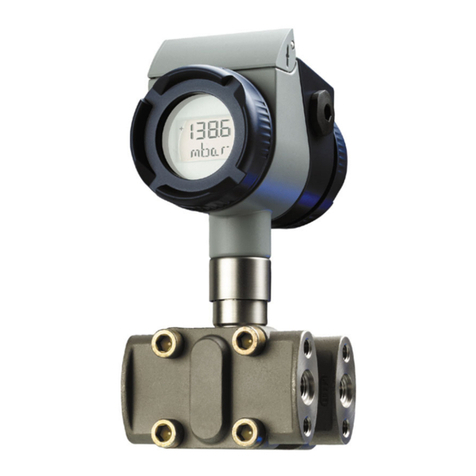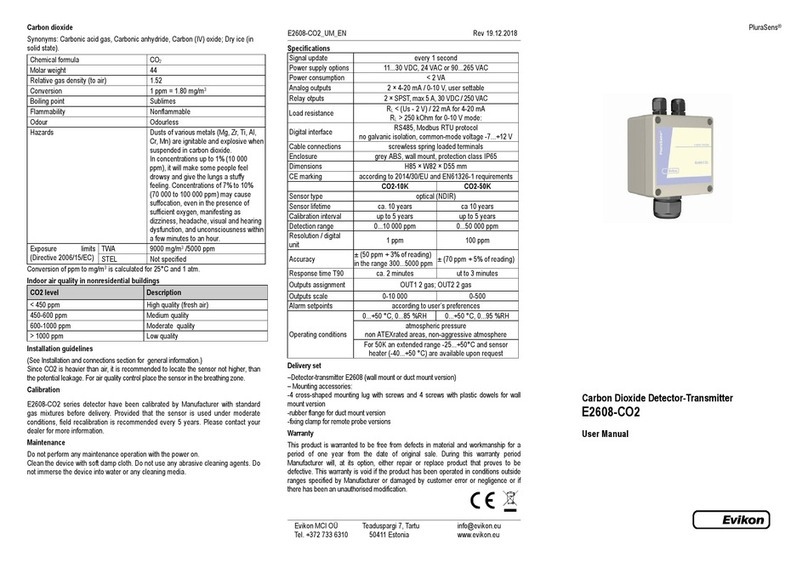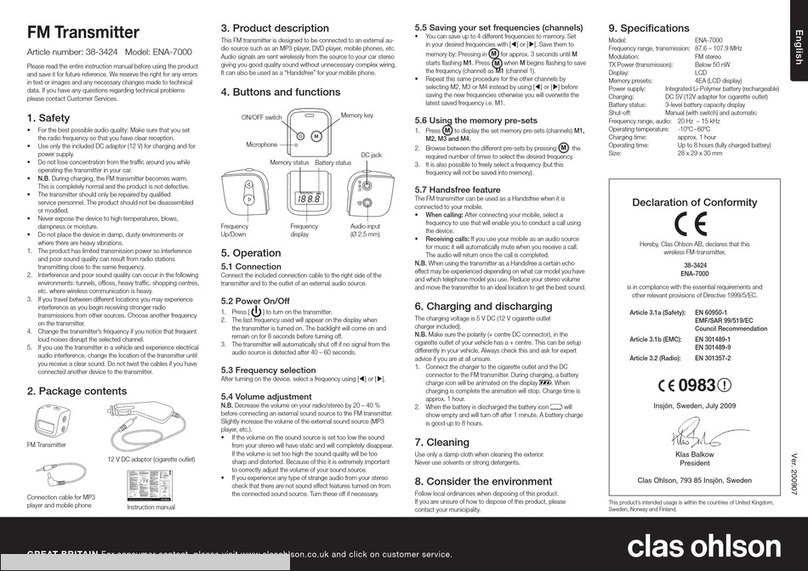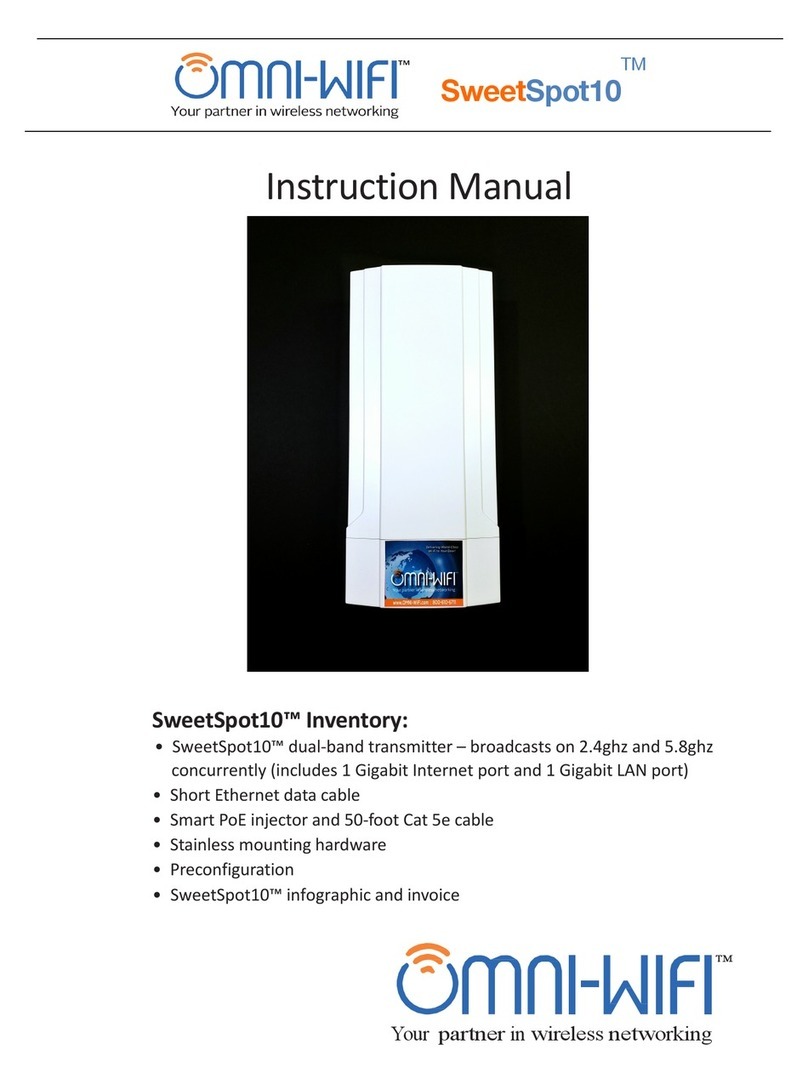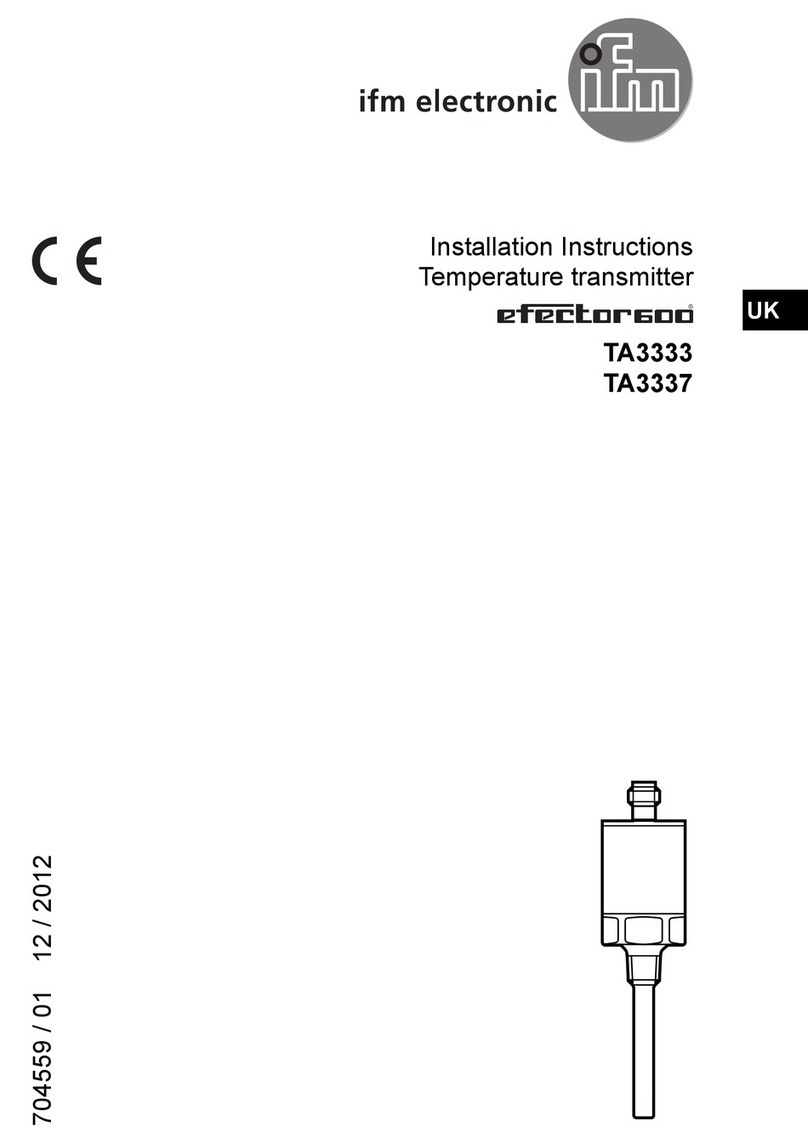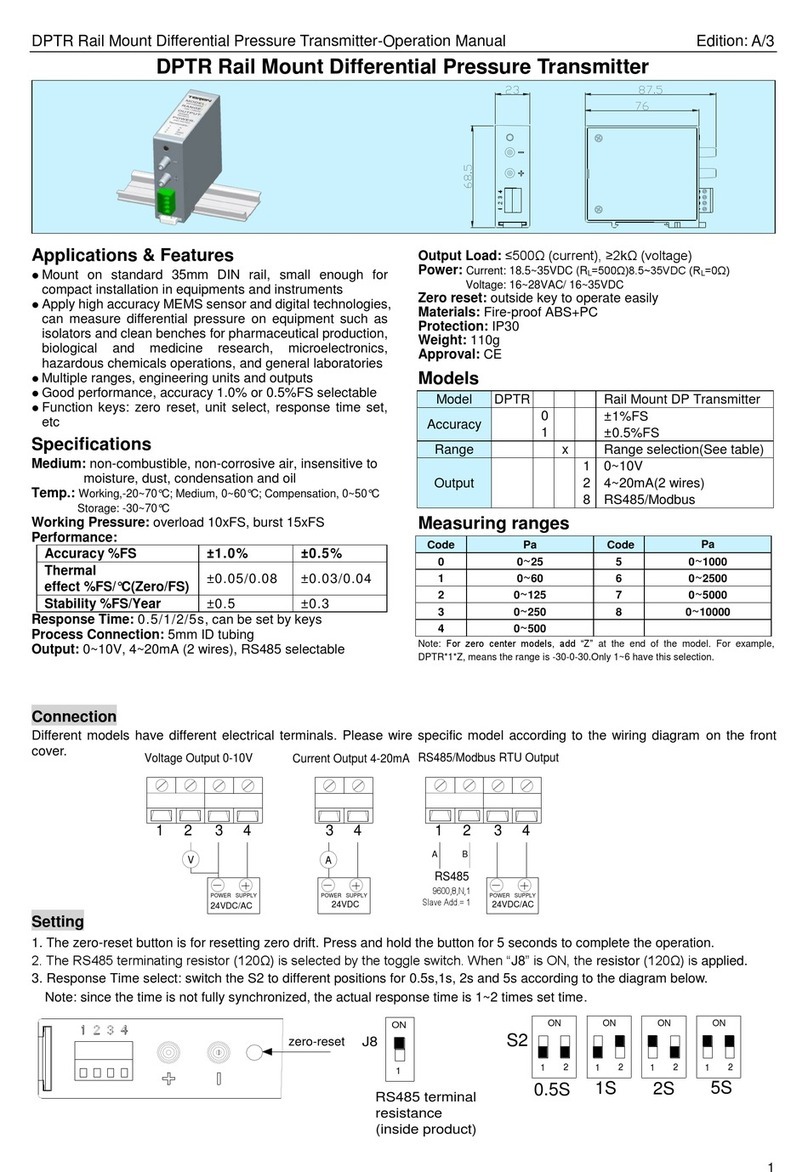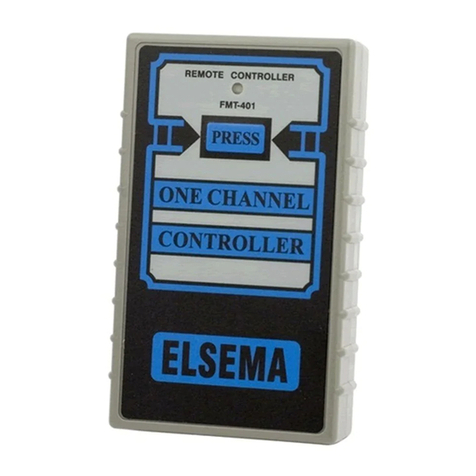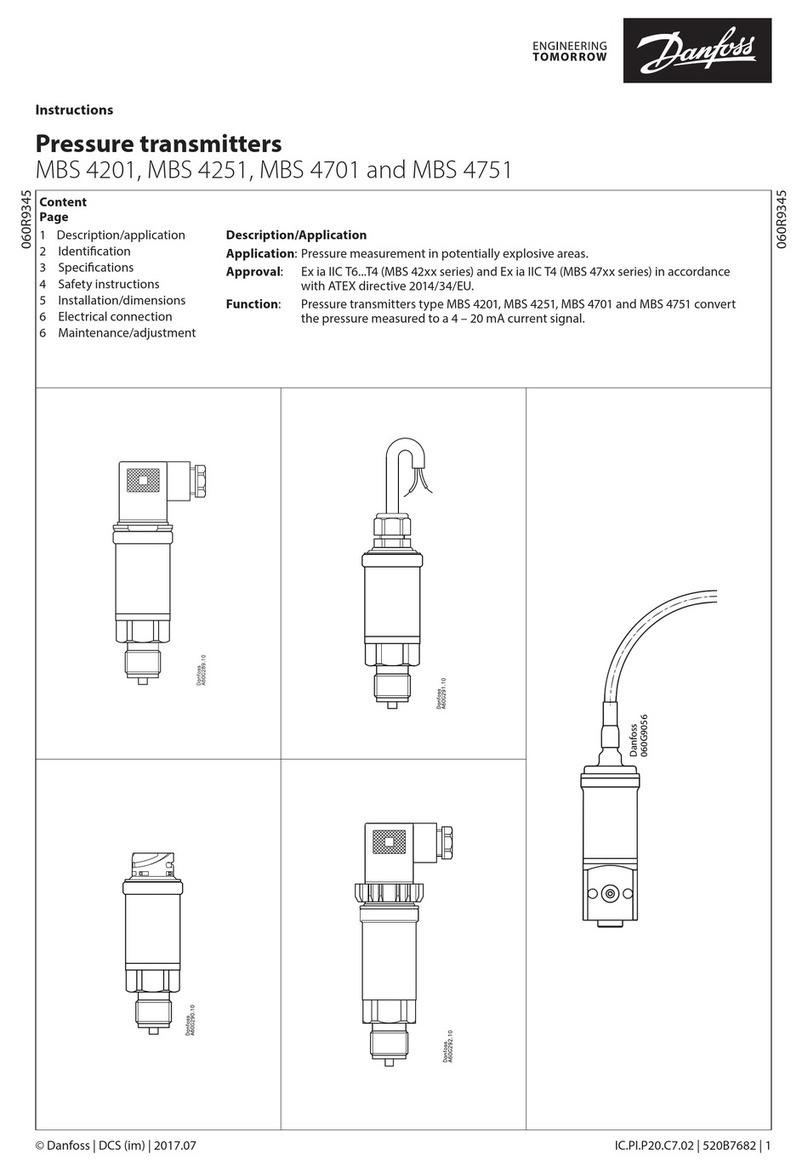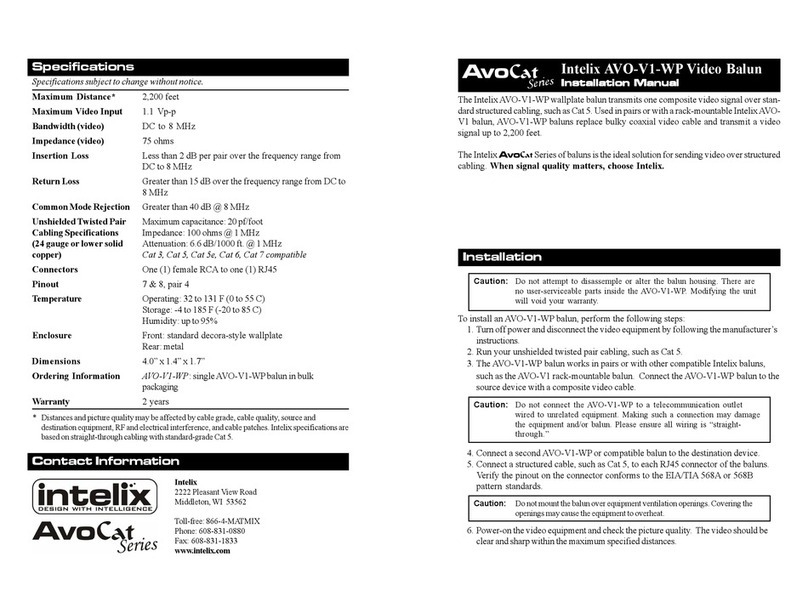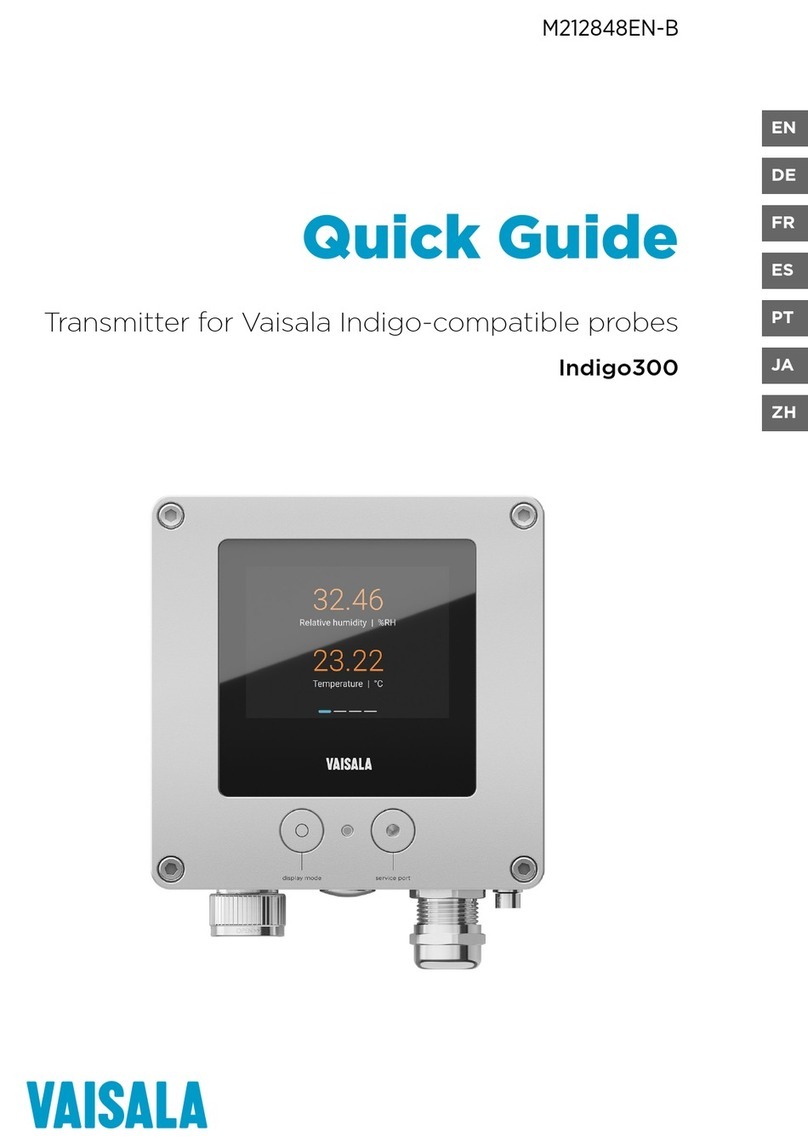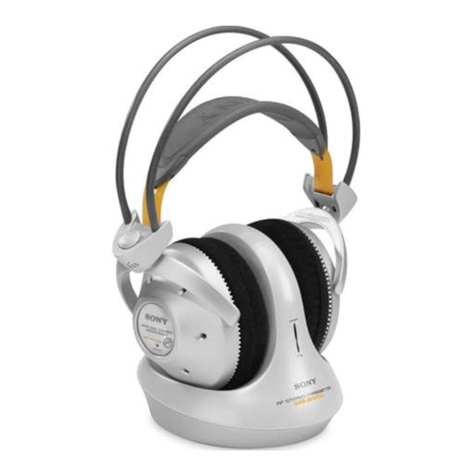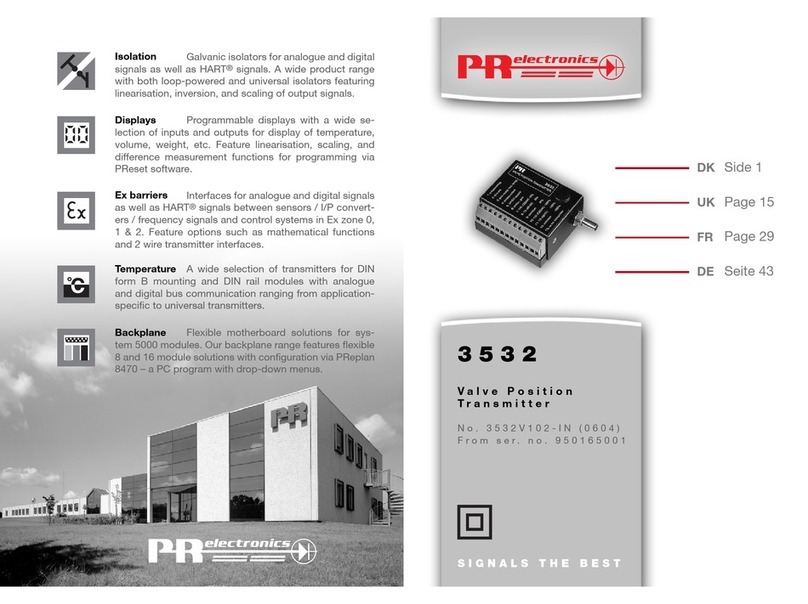Vishay DXP10 User manual

WEIGH SYSTEM TECHNOLOGY
BLH
DXP10/15 Weigh Transmitters
Operator’s Manual
TM002
RevG
6/1/11
Doc 35102

NOTICE
BLH makes no representation or warranties of any kind whatsoever with respect to the
contentshereof and specifically disclaims any implied warranties ormerchantability or
fitness for any particular purpose. BLH shall not be held liablefor errors contained herein
or for incidental or consequential damages in connection with the furnishing,
performance, or use of this publication or its contents.
BLH reserves the right to revise this manual at any time and to make changes inthe
contents hereof without obligation to notify any person of such revision or changes.
Call (781) 298-2216 for BLH Field Service

iii
Table of Contents
SECTION 1. General Information...................................................................................................................... 1-1
1.1 INTRODUCTION...................................................................................................................................... 1-1
1.1.1 General Description.............................................................................................................................. 1-1
1.1.2 Standard Instrument............................................................................................................................. 1-1
1.2 OPTIONS ................................................................................................................................................. 1-1
1.2.1 Mounting Options. ................................................................................................................................ 1-1
1.2.2 Optional Terminal Computer Interface................................................................................................. 1-1
1.2.3 Optional Modbus RTU Interface........................................................................................................... 1-2
1.2.4
Optional Fisher ProVox Protocol.......................................................................................................... 1-2
1.2.5 Optional Allen-Bradley Remote I/O ...................................................................................................... 1-2
1.2.6 Analog Option....................................................................................................................................... 1-2
1.2.7 Software Filter Option........................................................................................................................... 1-2
1.3 DXp-10/15 SPECIFICATIONS ................................................................................................................. 1-2
1.4ORDERING SPECIFICATIONS............................................................................................................... 1-4
1.5 WARRANTY POLICY............................................................................................................................... 1-4
1.6 FIELD ENGINEERING............................................................................................................................. 1-4
SECTION 2. Installation..................................................................................................................................... 2-1
2.1 INTRODUCTION...................................................................................................................................... 2-1
2.1.1 General................................................................................................................................................. 2-1
2.2 MOUNTING.............................................................................................................................................. 2-1
2.2.1 Standard Units...................................................................................................................................... 2-1
2.2.2 Explosion-Proof and Division 2 Options............................................................................................... 2-1
2.3 ELECTRICAL ........................................................................................................................................... 2-2
2.3.1 Transducer Inputs................................................................................................................................. 2-2
2.3.2 Serial Communication. ......................................................................................................................... 2-2
2.3.3Analog Output....................................................................................................................................... 2-3
2.3.4 Mains (AC) Power (Figure 2-4)............................................................................................................. 2-3
2.3.5 Auxiliary I/O Port................................................................................................................................... 2-3
SECTION 3. Configuration ................................................................................................................................ 3-1
3.1 GENERAL ................................................................................................................................................ 3-1
3.2 SET-UP .................................................................................................................................................... 3-1
3.2.1 Power Selection.................................................................................................................................... 3-1
3.2.2 Excitation Voltage................................................................................................................................. 3-1
3.2.3 Serial Format, Address, and Baud Rate............................................................................................... 3-1
3.2.4Input Range Selection. ......................................................................................................................... 3-1
3.3 CALIBRATION.......................................................................................................................................... 3-1

iv
3.3.1 Digital Calibration. ................................................................................................................................ 3-1
3.3.2Analog Calibration. ............................................................................................................................... 3-2
3.3.3 Monitor Mode Calibration. .................................................................................................................... 3-2
3.3.4 LCp-40 Calibration................................................................................................................................ 3-2
3.4 CHECK CAL............................................................................................................................................. 3-5
3.5 FILTER SELECTION................................................................................................................................ 3-6
3.5.1 Standard Filter...................................................................................................................................... 3-6
3.5.2 Optional Digital Filtering. ...................................................................................................................... 3-6
3.6 Factory Default Calibration....................................................................................................................... 3-7
SECTION 4. Serial Communication .................................................................................................................. 4-1
4.1 GENERAL ................................................................................................................................................ 4-1
4.1.1 LCp-40 Digi System Network. .............................................................................................................. 4-1
4.1.2 Standard Simplex Output (Continuous Output).................................................................................... 4-1
4.1.3 Computer/Terminal Interface (Optional)............................................................................................... 4-2
4.1.4 MODBUS BTU Protocol (Optional). ..................................................................................................... 4-4
4.1.5 Fisher ProVox Protocol (Optional)........................................................................................................ 4-7
4.1.6 Allen-Bradley Remote I/O (Optional).................................................................................................... 4-8
SECTION 5. Operation...................................................................................................................................... 5-1
5.1 GENERAL ................................................................................................................................................ 5-1
5.2 GROSS WEIGHT WEIGHING ................................................................................................................. 5-1
5.3 ZERO OPERATION ................................................................................................................................. 5-1
5.4 NET WEIGHT WEIGHING ....................................................................................................................... 5-1
5.5 TARE OPERATION.................................................................................................................................. 5-1
5.6 ERROR DETECTION............................................................................................................................... 5-1
5.7 CHECK CAL OPERATION....................................................................................................................... 5-1

1-1
SECTION 1. General Information
1.1 INTRODUCTION
1.1.1 General Description
The DXp-10 and DXp-15 (Figure 1-1) are
microprocessor based weight transmitters. DXp-
10/15 transmitters sum and convert the millivolt
signal from up to four strain gage type load cells
into a digital and/or analog voltage or current
signal (up to eight cells can be summed using
an external 308A summing unit). Bridge
excitation voltage is factory selectable for 10 or
15 volts. Units are available in NEMA 4, NEMA
4X or explosion proof enclosures for field
mounting. The unit operates from either 110 or
220 VAC at 50/60 Hz, and is equipped with
screw terminal connections for power input, and
serial/analog outputs. Set-up and calibration is
per-formed using three internal switches (see
SECTION III). Communication baud rate and
instrument address values are selected via a
bank of internal DIP switches (see SECTION
III).
The DXp-10 Transmitter performance
specifications are designed for inventory and
other static weighing applications where
moderate resolution and speed is required. The
DXp-15 Process Transmitter is equipped with
high performance circuitry that provides the
greater resolution and speed for dynamic
processapplications. Externallyand in regard to
set-up and operation, each model is identical
Using RS 485 serial communication protocol, up
to sixteen DXp transmitters can be networked to
an LCp-40, 41, or 42 Network Controller. The
serial format can also be configured to provide
point to point or network communication to a
customer supplied computer.
1.1.2 Standard Instrument
The standard instrument includes an RS 485
serial port with BLH Digi-System network or a
simplex output protocols, a four cell summing
circuit, 10 or 15 volt excitation, averaging filter,
and a NEMA 4 mild steel, painted enclosure.
Standard instruments are designed to meet
Class I, II, Division 2, Group A-G hazardous
location requirements and are optionally
available with FM and CSA approvals and
certifications.
1.2 OPTIONS
1.2.1 Mounting Options
For corrosive, hose down, or sanitary
environments, a NEMA 4X stainless steel
enclosure is available. An explosion proof
enclosure is available for Class I, II, Division 1,
Group B-G locations. Note: BLH 404 or 405
Intrinsic Safety Barriers must be specified for
weigh systems located in a Division I area.
Figure 1-1. DXp-10 Weight Transmitter
1.2.2 Optional Terminal Computer
Interface.
The terminal/computer interface option provides
a simple mnemonic half-duplex ASCII
communications protocolviaabuilt-in macro
language consisting of1to3character command
strings (reference Table 4-3).
This powerful feature allows direct keyboard
control (using easily remembered commands) of

1-2
DXp-10/15 calibration, and programming or
recall of weight variables (gross, net, tare, zero,
etc.) An on-line help function is available by
transmitting an ASCII Ir.
Easily learned macro language syntax greatly
simplifies the writing of a host computer
communication interface (customer supplied).
1.2.3 Optional Modbus RTU
Interface.
The Modbus interface option provides a simple
seamless communication link to any PC, PLC or
DCS with a mod-bus RTU Driver Option. Use of
this industry standard protocol (see paragraph
4.1.4) eliminates the requirement for custom
software driver development.
1.2.4
Optional Fisher ProVox
Protocol
DXp-15 transmitters may be ordered with the
Fisher ProVox protocol. ProVox protocol allows
the DXp-15 to interface directly with a Fisher
ProVox distributed control system (DCS).
1.2.5 Optional Allen-Bradley Remote
I/O
Optional Allen-Bradley Remote I10 (RIO) allows
13Xp¬15 transmitters direct access to a PLC
master processor. In essence, DXp-15
transmitters become direct coprocessors with
the PLC. DXp-15 data is read directly into the
main ladder logic program without using BCD or
serial interface cards. A simple three wire RIO
network connection ties all units together, even if
multiple DXp15s are used. Within the RIO
network link, each DXp-15 is addressed as 1/4
'logical rack'. Since a PLC logical rack consists
of 128 input and 128 output bits (or points), DXp
units communicate 32 input and 32 output bits;
1/4 logical rack format. For a full description of
logical rack addressing and data
communications formatting, reference the Allen
Bradley Remote I/O technical manual, BLH part
number TM010.
1.2.6 Analog Option.
Anoptionalanalogoutputprovidesbotha4-20mA
anda0-10 VDC output representing the gross
weight value. The circuituses a 12bitD-A
converter providingupto 4096 counts of resolution.
The current output drives up to a 1000 ohm load
and the voltage output will operate with a 25,000
ohm minimum load resistance.
1.2.7 Software Filter Option.
The digital filtering option offers eight software
filtering selections. The filter algorithms dampen
noise by averaging successive A-D conversions.
Digital filtering allows East response to true
weight changes by setting limits on averaging
based upon the magnitude of signal change.
Filter selections are presented in SECTION III.
Note: BLH tech note TD-071 provides a full
discussion of filter operation.
1.3 DXp-10/15 SPECIFICATIONS
PERFORMANCE
Resolution:
DXp-10 20,000 counts
DXp-15 50,000 counts
Sensitivity
DXp-10 1.0 μV/count
DXp-15 0.5 μV/count
Full Scale Range 25 of 35 mV (selectable)
Dead Load Range 100%
Input Impedance 10 M-ohms, max.
Load Cell Excitation 10 V for up to eight 350 ohm load cells (250 mA)
(Factory Selectable) 15 V for up to six 350 ohm load cells (250 mA)
Linearity ± 0.01% of full scale

1-3
Temperature Coefficient
Span 2ppm/°C
Zero ± 2ppm/°C
Common Mode Rel. 100 db or better at or below 35Hz
Normal Mode Rej. 100 db or better at or below 35Hz
Conversion Speed DXp-10 400 msec
DXp-15 50 msec
Environment
Operating Temperature -10 to 55°C (12 to 131°F)
Storage Temperature -20 to 85°C (-4 to 185°F)
Humidity 5 to 90% rh, non-condensing
Voltage 117/230 1: 15% 50/60 Hz
Power 10 watts max
Parameter Storage EEPROM
EMVRFI Shielded from typical industrial interference
ENCLOSURE
Dimensions (NEMA 414X) 11.5 x 8.0 x 4.3 HWD
Explosion Proof 12.875 x 10.875 x 8.188 HWD
OPTIONS
Isolated Analog Output
Type 12 bit Digital to Analog Conversion
Voltage 0 to 10 volt (25K ohm min load)
Current 4 to 20 mA (1000 ohm max load)
SERIAL COMMUNICATION
LCp-40 Network (Standard)
Type RS 485 Half Duplex (Multi-Drop)
Baud 56.7k
Simplex Data Output (Standard)
Interface Type RS 485 (Simplex)
Data Format Simplex ASCII Data
7 Data Bit
Even Parity
1 Stop Bit
Terminal/Computer Interface (Optional)
Interface Type RS 485 Half Duplex (Standard)
Baud 1200 or 9600
Protocol Duplex Command/Response Format
MODBUS RTU Protocol (Optional)
Fisher ProVox Protocol (Optional)
Allen-Bradley Remote I/O (Optional)
Consult factory for details

1-4
1.4 ORDERING SPECIFICATIONS
DXp-10 or DXp-15 [M]-[C]-[P]-[S] Includes: RS 485 Serial Output
[M] Mounting
(1) NEMA 4 Painted —standard
(2) NEMA 4X Stainless Steel
(3) NEMA 7 & 9 Explosion-Proof Class I, H, Div. 1,2 Grp. B—G
(8) #1 & FM/CSA Approved [Class l, Div 2, Group ABCD FG]
(9) #2 & FM/CSA Approved [Class l, Div 2, Group ABCD FG]
[C] Communication
(1) RS 485 LCp-40 Network —standard
(2) RS 485 LCp-40 Network and Terminal/Computer Interface
(4) Allen Bradley Remote I/O (DXp-15 only)
(5) MODBUS RTU Protocol (D4-15 only)
[P]Process Output
(1) No Process Output —standard
(2) 0-10 V & 4-20 mA analog
[S]Software
(1) Standard
(2) Dynamic Digital Filtering (DXp-15 only)
1.5 WARRANTY POLICY
BLH warrants the products covered hereby to be
free from defects in material and workmanship.
BLH's liability under this guarantee shall be
limited to repairing or furnishing parts to replace,
f.o.b. point of manufacture, any parts which,
within three (3) years from date of shipment of
said product(s) from BLH's plant, fail because of
defective workmanship or material performed or
furnished by BLH. As a condition hereof, such
defects must be brought to BLH's attention for
verification when first discovered, and the
material or parts alleged to be defective shall be
returned to BLH if requested. BLH shall not be
liable for transportation or installation charges,
for expenses of Buyer for repairs or
replacements or for any damages from delay or
loss of use for other indirect or consequential
damages of any kind. BLH may use improved
designs of the parts to be replaced. This
guarantee shall not apply to any material which
shall have been repaired or altered outside of
BLWs plant in any way so as, in BLH's
judgment, to affect its strength, performance or
reliability, or to any defect due in any part to
misuse, negligence, accident or any cause other
than normal and reasonable use, nor shall it
apply beyond their normal span of life to any
materials whose normal span of life is shorter
than the applicable period stated herein. In
consideration of the forgoing guarantees, all
implied warranties are waived by the Buyer, BLH
does not guarantee quality of material or parts
specified or furnished by Buyer, or by other
parties designated by buyer, if not manufactured
by BLH. If any modifications or repairs are made
to this equipment without prior factory approval,
the above warranty can become null and void.
1.6 FIELD ENGINEERING
The field service department at BLH is the most
important tool to assure the best performance
from your application. The expertise and
understanding of BLH's Field Engineers can
solve even the most perplexing installation
problem. Precise calibration and start-up
procedures, performed by a qualified,
experienced field engineer, assure not only the
reliability of BLH components, but the integrity of
the entire weigh system.
Call (Factory Number) (781) 298-2200
Ask for Field Service
Canada (416) 251-2554

2-1
SECTION 2. Installation
2.1 INTRODUCTION
2.1.1 General.
The DXp-10/15 is designed to 'installed within the
length of the load cell(s) cable which is normally
35 ft or less. The standard NEMA 4 or optional
NEMA 4X enclosures are suitable for an outdoor
or wash down type environment. Both enclosures
are provided with pre-punched holes for
installation of conduit or cable fittings and holes for
mounting to a bracket or wall.
2.2 MOUNTING
2.2.1 Standard Units.
The NEMA 4 and NEMA 4X enclosures are
equipped with four pre-punched holes for
mounting to a wall or bracket. A U-bolt can be
used for mounting to a pipe support. The
instrument should be installed in a vibration-free
location within the normal length of the load cell
cables. If conduit is used, drains should be
provided to reduce the possibility of condensate
entering the enclosure. Outline dimensions for the
standard DXp¬10/15 transmitter are presented in
Figure 2-1.
2.2.2 Explosion-Proof and Division 2
Options.
DXp units may be ordered with an optional
explosion-proof enclosure for use in Division I
hazardous locations. Dimensions for the optional
explosion-proof enclosure are provided in
Appendix C.
For Division 2 applications, FM approved units are
available as non-incendive devices in NEMA 4/4X
enclosures with dimensions identical to those
presented in Figure 2-1.
Figure 2-1. DXp-10 Outline Dimensions

2-2
Figure 2-2. Load Cell Connections.
2.3 ELECTRICAL
2.3.1 Transducer Inputs.
Up to four load cells can be connected to the
summing circuit within the DXp. Connect individual
load cells directly to the circuit board connectors
as shown in Figure 2-2. Excitation and signal
connection locations are dearly marked according
to function and standard color code.
If more than four cells are required, an external
308A summing junction box must be used. Make
all load cell connections in the 3084 unit, not the
DXp-10/15. Connect the output leads of the 3084
summing box to the load cell #1 terminal blocks in
the DXp. Sense leads from the 3084 must be
connected to the sense terminal blocks in the
DXp-10/15 (Figure 2-2). Jumpers JF1 and JP2
must be removed.
2.3.2 Serial Communication.
If a deadweight or substitution method of
calibration is being used, the load cal cable can be
shortened as required. The leads should be re-
tinned before the final connection is made.
NOTE: If tension or universal load cells are used,
red (-signal) and white (+ signal) leads may need
to be reversed.
A terminal connector is provided for RS 485 wire
connections (Figure 2-3). Multiple DXp
transmitters, networked together, are wired in a
parallel configuration with a termination jumper
installed on the last instrument. A pair of twisted
wires (14-20 gauge) is all that is required for
interconnection. Communication lines should not
be run near ac voltage power lines.
Figure 2-4. Ac Power Connections and Fuse

2-3
2.3.3 Analog Output.
When the analog option is installed (shown,
Figure 2-3), a three position terminal connector
is provided for 4-20 mA, 0-10 V, and common
connections. As with serial communication, the
wiring should be routed away from ac power
lines and other sources of EMI. The current
output is essentially immune to noise and can be
transmitted long distances. The voltage output is
susceptible to EMI/RFI and should be used only
for short distances.
2.3.4 Mains (AC) Power (Figure 2-4).
A screw terminal is provided for permanent
transmitter power connection. DXp transmitters
can be switch selected to operate at 115 or 220
VAC (see SW1, Figure 2-4). Before connecting
power to the unit, verify that the proper power
selection has been made. The two position
terminal block is equipped with a clear plastic
cover to prevent operator injury. Cable can be
either solid or stranded 12 or 14 gage with a
ground conductor.
The transmitter is protected with a 114 amp slow
blow fuse, located adjacent to the mains
terminal block. If the fuse opens, replace it with
the same type and current rating.
2.3.5 Auxiliary I/O Port.
The auxiliary I/0 port connection is a factory test
port and is not useful to an operator.

3-1
SECTION 3. Configuration
3.1 GENERAL
Set-up and calibration of the DXp-10/15 is
accomplished by an operator without
programming using the DIP switches, push-
buttons, and toggle switches within the unit.
Units connected to an LCp-40 or computer ter-
minal can be set-up and calibrated remotely via
the serial port (see Appendix E).
3.2 SET-UP
3.2.1 Power Selection
All units are shipped from the factory configured
for 115 VAC operation. To change the voltage
selection to 230 VAC, change SW1 (see Figure
2-4) to the 230V setting. The unit will operate
within specification at 50 or 60 Hz.
3.2.2 Excitation Voltage.
All units are shipped from the factory set for 10
volt excitation.
3.2.3 Serial Format, Address, and
Baud Rate.
DIP switch selections for transmitter address,
baud rate and serial interface format are
presented and defined in SECTION IV, Serial
Communication.
3.2.4 Input Range Selection.
Units are shipped configured for a 25 mV input
range. To increase this range to 35 my, remove
the jumper shunt from JP2 on the A-D converter
board as shown in Figure 3-1 (see Appendix A
photo for A-D board location).
Figure 3-1. 35 mV Input Conversion Instructions
3.3 CALIBRATION
Note: All switches mentioned in paragraphs
3.3.1 –3.3.4 are depicted in Figure 3-1.
3.3.1 Digital Calibration.
The transmit only serial output can be digitally
calibrated using the DIGITAL selector, 1NC/DEC
and ENTER switches mounted on the DXp-
10/L5 control panel. For those systems where
applying a full capacity dead weight or input
signal is not practical, the DXp-10/15 will
automatically calculate a linear full span
calibration based on a single span point. See
Table 3-1 for instructions.

3-2
3.3.2 Analog Calibration.
The analog output is calibrated independently of
the digital calibration and can be set using span
points anywhere between zero and full scale
capacity. The 0-10 V and 4-20 mA outputs CAN
NOT be calibrated independently. See Table 3-2
for complete analog calibration instructions.
3.3.3 Monitor Mode Calibration.
The terminal/computer interface option enables
the DXp-101L5 to be calibrated remotely from a
host computer or terminal. The monitor mode
functionally accesses the software routines used
to provide remote access via the keypad of an
LCp-40 Network Controller. In response, the
DXp-10/15 transmits two lines of information
similar to the two line display on an LCp-40. In
this mode the capacity, graduations, decimal
point, 5 point linearization and other values can
be established from the host device. Help
messages also can be accessed at any time to
aid in the set-up process. The procedure
recorded in Table 3-3 shows the command
sequence required to perform remote
calibration. Consult SECTION IV for serial
communication details.
3.3.4 LCp-40 Calibration.
When networked to an LCp-40, 41, or 42
controller, the DXp-10/15 can be remotely
calibrated using the controller display and
keypad. In this configuration, up to five
linearized span points can be entered. Appendix
E presents step by step flow diagrams for
remote LCp-40 calibration and parameter set-
up.
Figure 3-2. Set-up and Calibration Switch Locations (Shade)
Table 3-1. DXp-10 Digital Calibration
Instructions
[1]. Connect Load Cells and Remote
Terminal.
Install the load cells and wire them to the
DXp-10/15. Connect the RS 485 serial
output to a compatible terminal/readout
device. Select a compatible serial output
format and establish that the
communication link is operating (paragraph
3.2.3).
[2]. Establish Zero.
Make sure that all dead weight (vessel,
mixer, pipes, etc) is applied as it will be
during normal operation. Move the five
position slide switch (Figure 3-2) to the
digital zero position. Press the enter
button to acquire zero and wait
approximately 5 seconds for the zero
reference value to be stored. The red
OPTION STATUS LED will resume
flashing when the storage procedure is
complete.

3-3
[3]. Load System.
Apply a known ―live‖ weight value to the
scale/vessel or input a known mV/V signal
from a BLH 625 calibrator to the DXp unit.
(NOTE: An external mV source cannot be
used to calibrate a DXp-10/15. A BLH 625
calibrator is required. If a 625 calibrator is
not available, contact a BLH field service
center for assistance.)
[4]. Establish Full Span.
Move the 5 position slide switch to the
digital span position. Use the
increment/decrement toggle switch to
increase or decrease the displayed
(terminal/output device) weight value until
the displayed value matches the known
weight value. Note that the rate of the
value change accelerates the longer the
switch is depressed. When the desired
value is displayed, press the enter button
and wait approximately five seconds for
storage. Again, the red OPTION STATUS
LED will resume flashing when storage is
complete. NOTE: There is no decimal
point available using this calibration
method. The DXp will default to the best
resolution possible based upon the scale
capacity and input signal.
[5]. Resume Normal Operation.
Return the 5 position slide switch to the run
position. Digital calibration is complete.
Table 3-2. DXp-10 Analog Calibration
Instructions
[1]. Connect Load Cells and Volt/Current Meter.
Install the load cells and wire them to the
DXp-10/15. Connect the analog output to a
voltage or current meter.
[2]. Establish Zero Reference/First Span Point.
Make sure that all dead weight (vessel,
mixer, pipes, etc.) is applied as it will be
during normal operation. Move the five
position slide switch (Figure 3-2) to the
analog zero position. Use the
increment/decrement toggle switch to
adjust the analog output so that the desired
value is displayed on the meter. Holding
the toggle switch in the depressed position
increases the rate of change. Press the
enter button to acquire zero and wait
approximately 5 seconds for the zero
reference value to be stored. The red
OPTION STATUES LED will resume
flashing when the storage procedure is
complete.
[3]. Load System.
Apply a known ―live‖ weight value to the
scale/vessel or input a known mV/V signal
from a BLH 625 calibrator to the DXp unit.
(NOTE: An external mV source cannot be
used to calibrate a DXp-10/15. A BLH 625
calibrator is required. If a 625 calibrator is
not available, contact a BLH field service
center for assistance.)
[4]. Establish Full Span.
Move the 5 position switch to the analog
span position. Use the
increment/decrement toggle switch to
increase or decrease the displayed (meter
display) weight value until the displayed
value matches the known weight value.
When the desired value is displays, press
the enter button and wait approximately 5
seconds for storage. Again, the red
OPTION STATUS LED will flash when
storage is complete.
[5]. Resume Normal Operation.
Return the 5 position slide switch to the run
position. Digital calibration is complete.

3-4
Table 3-3A. Setup in Monitor Mode.
ASCII Command in
Order of Operation
Serial Output
Explanation
SMM
Set Monitor Mode
Access Monitor Mode
C
Setup
Access Setup to Enter/Alter System
Parameters
M
5000 –CAP LB
Modify Setup
M-I or D
500.00 (flashing)
CAP LB
Modify Capacity
I or D
400.00
Increment or Decrement Digits
E
400.00
CAP LB
Enter Capacity
E
400.00
Select Decimal Position
M-I or D
400.00
DECIMAL
Change Decimal Position
E
400.00
Enter Decimal
E
0.050
GRAD
Graduation Setting
M
I or D
E
0.050
0.050
0.050
GRAD
Modify Graduation
Increment/Decrement
Enter
E
102
OVER
Overrange Setting
M-I or D
OFF/102
Select OFF or 102%
E
20
ZERO
Change Zero Selection
M-I or D
2
ZERO
Select 2% or 20%
Full Scale Zero Allowance
E
2
ZERO
Enter Selection
E
OFF
MN BAND
Change Motion Band Selection
M-I or D
OFF
MN BAND
Select OFF, 1, or 2 counts
E
OFF
MN BAND
Enter Selection
E
SETUP
Parameter Enter/Alter Complete
E
Normal Weighing

3-5
Table 3-3B. Calibration in Monitor Mode
ASCII Command in Order of
Operation
Serial Output
Explanation
E
CAL
Enter Calibration Mode
M
000
ZERO
Zero Setting
Z
000
Acquire
Acquire Zero
E
CLEAR
Clear Old Span Point(s)
M-Z or E
SPANS
Span Setting
M
5100.00
166329
Span 1 Value
Internal Counts
X
SPANS
Skips Span
E
Adjust
Change Spans
M
000(flashing)
SPAN 1
Adjust Span1
M
0000 (flashing)
Acquire Span 1
M & I/D
1000.0
Enter Span 1Weight Value
Note: Use M & Eto access and
change spans 2-5 if desired.
E E
NormalWeighing
Exit CAL Mode
3.4 CHECK CAL
The standard transmitter is provided with a check
cal feature that can be operated manually by
pushing a button on the DXp operator panel (see
Figure 3-1) or remotely via the serial port. This
feature provides a check of the instrument
calibration to verify that drift or other problems
have not occurred. Check cal uses an internal
shunt resistor circuit to provide a fixed repeatable
signal into the input of the transmitter. The input
signal produces a known output which can be
verified by viewing the terminal/meter used to
perform calibration.
Due to the infinite variety of calibrations and
applications, a range of shunt calibration values
are available by changing the position of the
resistor circuit component carrier in socket U6 on
the A/D board. Access is obtained by removing the
card rack cover and should be performed by a
qualified technician. In most cases, a value that
produces a signal equal to 80% of system capacity
is desired. Table 3-4 lists the positions and
resulting percent of output given a typical 2.0 mV/V
load cell application.

3-6
Table 3-4. Check Cal Percentage Selection/Module Position.
Module
Position
Resistance
(ohms)
1 Cell
2 Cells
3 Cells
4 Cells
1
13400
125%
114%
78%
59%
2
94800
125%
125%
110%
84%
3
15800
125%
97%
66%
50%
4
70400
41%
22%
15%
11%
5
546000
53%
28%
19%
14%
6
395000
74%
39%
26%
20%
7
309000
94%
50%
33%
25%
8
237000
125%
65%
44%
33%
Percent of Full Scale (2 mV/V) Output when Check Cal Button is Pressed.
3.5 FILTER SELECTION
3.5.1 Standard Filter.
Standard filtering offers simple successive
averaging of A-D conversions to stabilize the
output signal. Pressing and holding the enter
button accesses the selection mode: the
increment/decrement toggle switch changes the
setting. As the setting is changed, the OPTION
STATUS LED flashes to indicate the selection.
Average selections of 1, 2, 4, 8, 16, 32, 64 or 128
are available (Table 3-5).
Table 3-5. Standard Filter Selections
Setting
(Flashes)
Conversions
Averaged
1
1
2
2
3
4
4
8
5
16
6
32
7
64
8
128
Hold down enter key and toggle INC/DEC key for
selections.
3.5.2 Optional Digital Filtering.
Optional digital filtering offers the benefits of
successive averaging without the corresponding
delay in response time to real weight changes.
Digital filtering software determines the number of
A-I) conversions to be averaged on a moving basis
(Figure 3-3). Conventional averaging takes place
at the selected rate within a window of counts
defined as 'band (Table 3-6). If the signal exceeds
the band count limits, averaging continues on a
reduced basis within the larger window of counts
designated 'response'. Once the signal exceeds
both windows, band and response, averaging
stops until the signal begins to stabilize again. This
two-dimensional approach provides fast, accurate,
and stable weight data for difficult process
weighing applications. Consult BLH technical note
7D-071' for a complete explanation of optional
digital filtering.
Pressing and holding the ENTER button accesses
the filter selection mode: the increment/decrement
toggle switch changes the setting. As the setting is
changed, the OPTION STATUS LED flashes to
indicate the selection (one flash = setting one,
etc.). Table 3-6 (upper portion) defines the
parameters of each of the eight possible
selections. Releasing the ENTER button stores the

3-7
10.75 11 26
CD
8
•
OLII
111.14111091C9.SIC.
11.11.011••
■
•••
OUTLINE
DXp EXPLOSION PROOF
CLASS I. COP B.C.0
4 6 5 5 4 5
1
selection. After selecting a filtering parameter,
choose an averaging value (Table 3-6 lower
portion). Select averaging by holding the toggle
switch to increment or decrement to access the
selection mode. Press the ENTER button to
change. The OPTION STATUS LED flashes to
indicate the selection number (14 flashes).
Releasing the toggle switch stores the selection.
Figure 3-3. Optional Digital Filtering Operation.
Table 3-6. Optional Digital Filtering Selections.
Filter Type Selection: Hold down enter key and
toggle INC/DEC key for selections.
Setting
(Flashes)
Averaging*
Band
(Counts)
Response
(Counts)
0
*
0
0
1
*
1
4
2
*
2
8
3
*
4
16
4
*
8
32
5
D*
1
4
6
D*
2
8
7
D*
4
16
8
D*
8
32
Averaging Selection: Hold toggle switch to
INC/DEC, press enter key for selections.
Setting (Flashes)
Conversions
Averaged
1
1
2
2
3
4
4
8
5
16
6
32
7
64
8
128
*Insert averaging value as selected in table
above; ‘D’ doubles averaging value selection.
3.6 Factory Default Calibration
Table 3-7 presents the DXp-10/1.5 factory
calibration default parameters. All DXp units
shipped by BLH are calibrated to the specifications
shown in Table 3-7.
Table 3-7. Factory Calibration Default
Parameters
DXp Parameter
Default Specification
Capacity
10,000
Units
Pounds
Decimal Point
None
Grad
1
Overrange
Off
Zero Band
2% of capacity
Motion Band
Off
External Zero
0
Span 1 Units
10,000
Span 2 Units
Cleared
Span 3 Units
Cleared
Span 4 Units
Cleared
Span 5 Units
Cleared
D/A Zero Volt Output
0 (min bit of 4095)
D/A 10V Output
4095 (max bit of 4095)
Filter
1
Averaging
1
* The Dxp-10 has up to 368,640 raw internal
counts.

4-1
SECTION 4. Serial Communication
4.1 GENERAL
The DXp-10/15 is equipped with a variety of
standard and optional serial output formats that
are selected using a series of DIP switches
(Figure 4-1). DIP switch positions 1, 2, and 3
allow three format choices; Digi-System
network, continuous output, and
terminal/computer interface (Table 4-1). All three
types of DXp interfacing will be discussed in the
following paragraphs. Positions 4-7 designate
transmitter address for applications requiring
more than one DXp unit (Table 4-2). Switch
position 8 is unused and should be left in the '0'
(ON) position.
NOTE: If the MODBUS option is installed and
enabled, use the DIP switch selections
presented in Figure 4-2• (Page 4-4).
4.1.1 LCp-40 Digi System Network.
Up to 16 DXp-10/1.5 transmitters can be
networked to the LCp-40 Network Controller.
The half duplex format used to run the network
is designed to provide remote operation of
gross, net, tare, zero, calibration/set-up, and
diagnostics, at high speed. This format is not
intended for direct interface with a terminal or
computer. The baud rate is selectable to
accommodate systems with very long (low baud)
or short (high baud) distances between DXp
units.
4.1.2 Standard Simplex Output
(Continuous Output).
The simplex output format is designed to
transmit gross weight data (ASCII coded) to a
remote terminal or computer. The accuracy of
this point to point, digital communication
interface is much greater than simple analog
current or voltage approximates. Simplex
outputs are transmitted in the format on page 4-
2, top left-hand column.
Table 4.1. Serial Interface and Band Rate
Selections
Switch
Positions
1 2 3
Baud
Rate
Interface
0 0 0
9600
Digi-System Network
1 0 0
28800
Digi-System Network
0 1 0
57600
Digi-System Network
1 1 0
1200
Continuous Output
0 0 1
9600
Continuous Output
1 0 1
1200
Terminal Interface
0 1 1
9600
Terminal Interface
1 1 1
-
Reserved Setting; used
for special protocol
interface options
Switch
Position
4 5 6 7
Address
0 0 0 0
16
1 0 0 0
1
0 1 0 0
2
1 1 0 0
3
0 0 1 0
4
1 0 1 0
5
0 1 1 0
6
1 1 1 0
7
0 0 0 1
8
1 0 0 1
9
0 1 0 1
10
1 1 0 1
11
0 0 1 1
12
1 0 1 1
13
0 1 1 1
14
1 1 1 1
15

4-2
Figure 4-1. Serial Communication Parameter Selection Switch.
4.1.3 Computer/Terminal Interface
(Optional).
This half duplex (transmit and receive) format is
designed for two way communication between a
single D4-10/15, or a network of DXp-10/15 units,
and a computer/terminal. Protocol accommodates
all operations such as gross, net, tare, zero, as
well as remote set-up, calibration, and filter
selection. Use of this format requires customer
developed device specific software to run the
various network operations. Table 4-3 defines the
terminal interface protocol. Monitor mode (see
Table 4-3) allows many of the LCp¬40 keypad
switch functions to be implemented from the host
terminal/computer. These functions are essential
when performing remote calibration and parameter
set-up.
Table 4-3a. Computer/Terminal Interface Protocol.
ASCII
Command
Description
Action
Response
W
Weight
Return Current Weight
Data and Mode
Information
[stx/adr/pol/data/sp/units/mode/stat/tc/CRLF]
G
GROSS
Switch to Gross Mode
[stx/adr/pol/data/sp/units/‖G‖/stat/tc/CRLF]
N
Net
Switch to Net Mode
[stx/adr/pol/data/sp/units/‖N‖/stat/tc/CRLF]
T
Tare
Switch to gross mode and
Tare
[stx/adr/pol/data/sp/units/‖N‖/stat/tc/CRLF]
Z
Zero
Switch to gross mode and
Zero
[stx/adr/pol/data/sp/units/‖G‖/stat/tc/CRLF]
L
Pounds
Switch to Pounds
[stx/adr/pol/data/sp/‖L‖/mode/stat/tc/CRLF]
K
Kilograms
Switch to Kilograms
[stx/adr/pol/data/sp/‖K‖/mode/stat/tc/CRLF]
SMC
Set Continuous
Mode
Send weight data
continuously
[stx/adr/pol/data/sp/units/mode/stat/tc/CRLF]
SMD
Set Demand
Mode
Must request data
SC
Check Cal
Remotely Operates Check
Cal
[stx/adr/pol/data/‖C‖ ―C‖/stat/tc/CRLF]
This manual suits for next models
1
Table of contents
Other Vishay Transmitter manuals
Popular Transmitter manuals by other brands
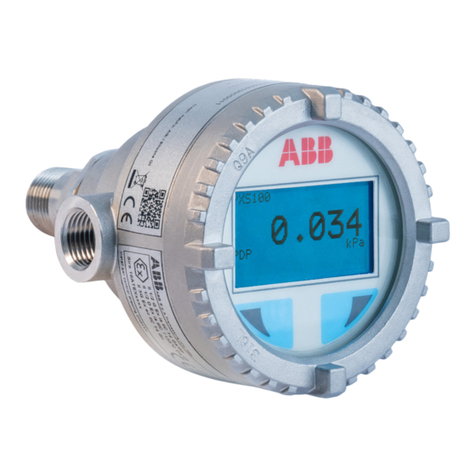
ABB
ABB PGS100 Operating instruction
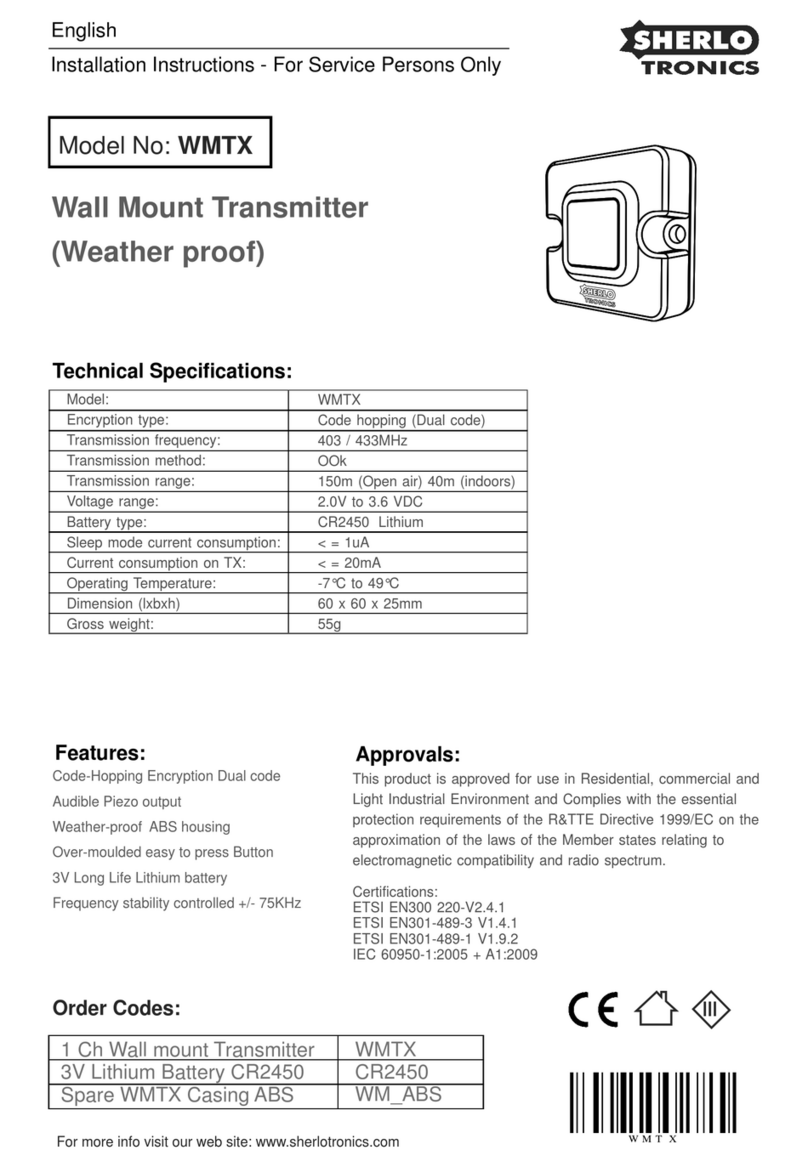
Sherlotronics
Sherlotronics WMTX Installation instructions and owner's manual
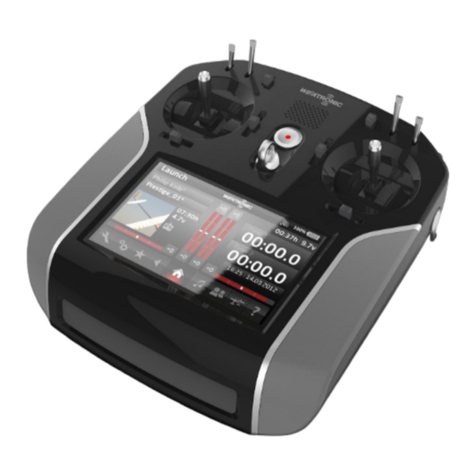
Weatronic
Weatronic BAT 60 quick guide
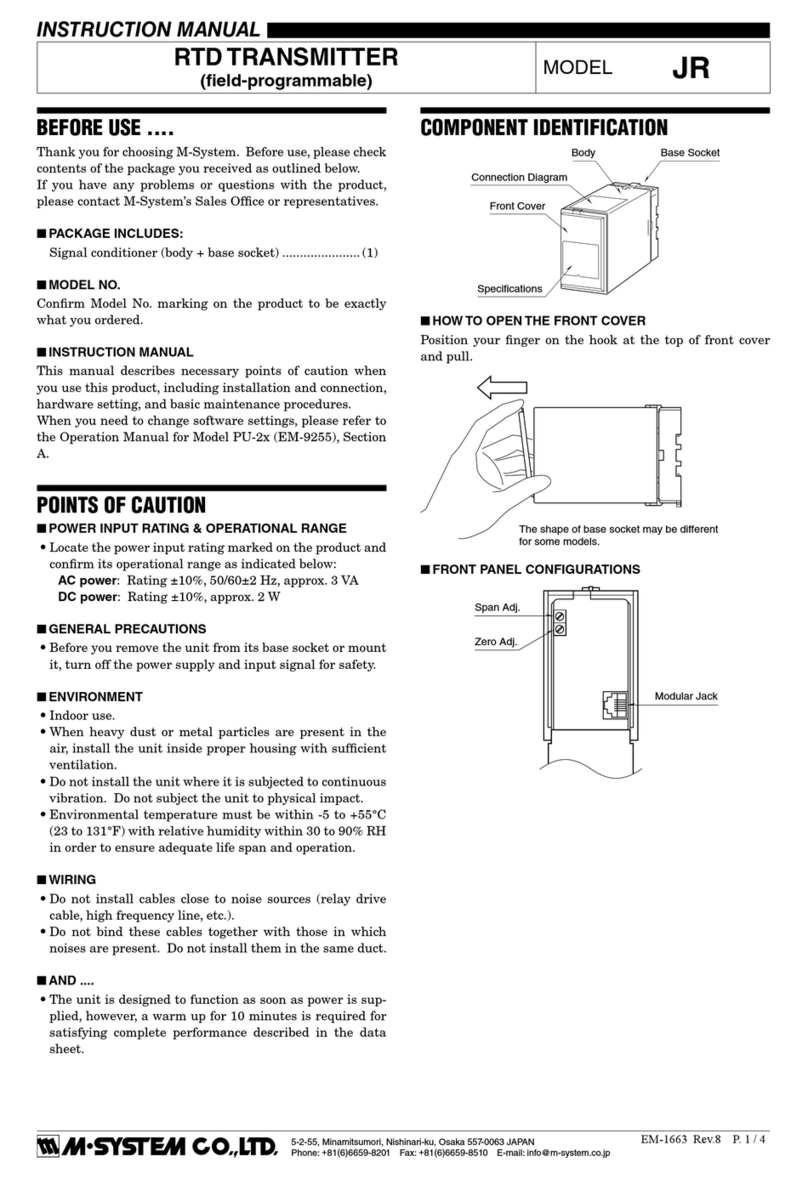
M-system
M-system JR instruction manual
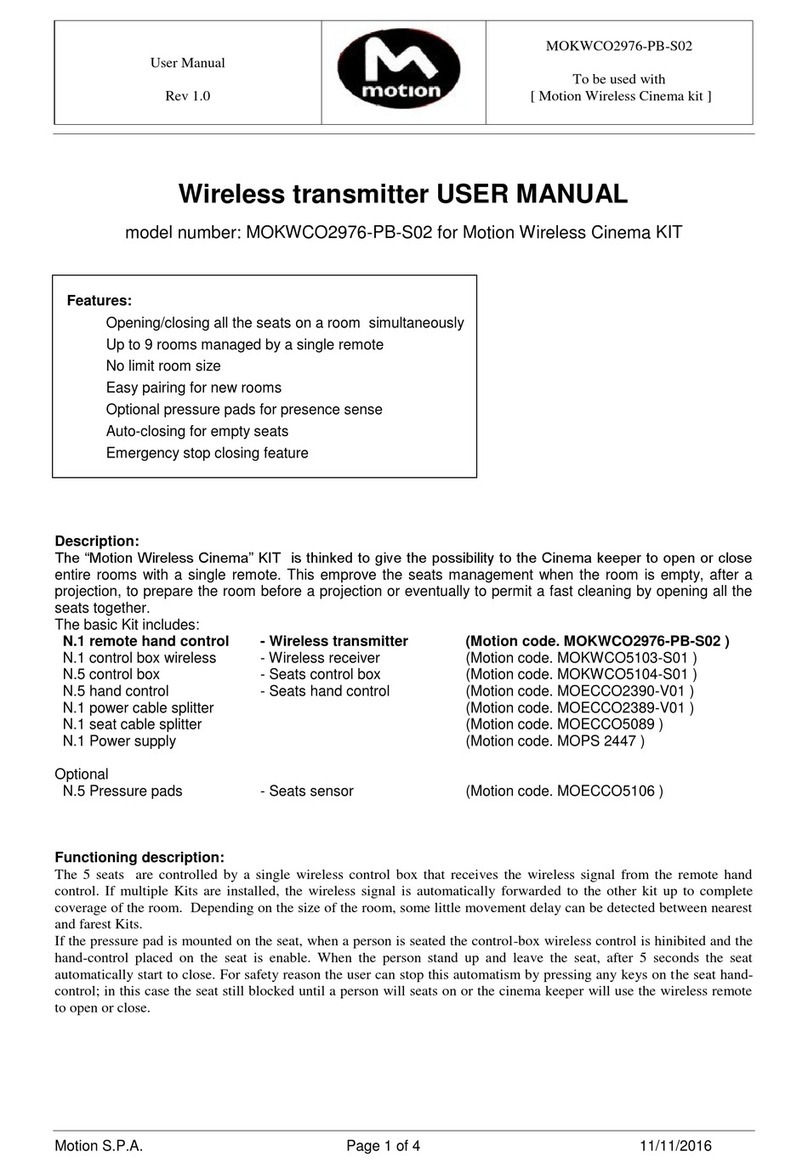
Motion
Motion MOKWCO2976-PB-S02 user manual
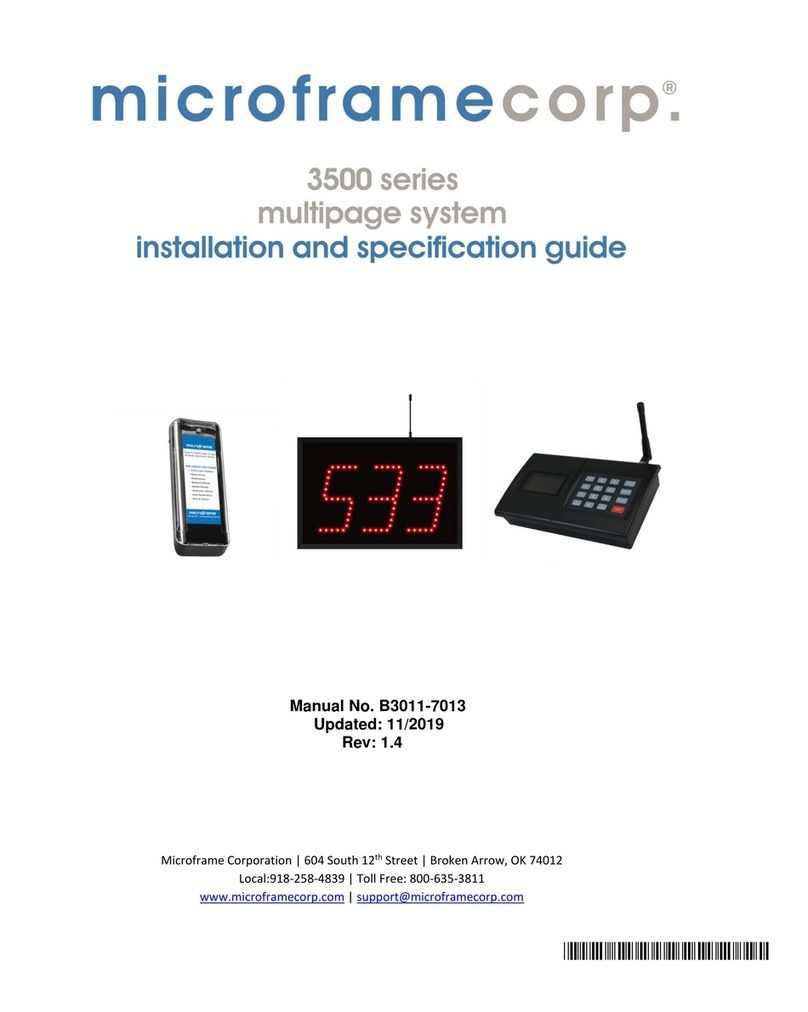
Microframe Corporation
Microframe Corporation MultiPage B3011 Installation and specification guide

